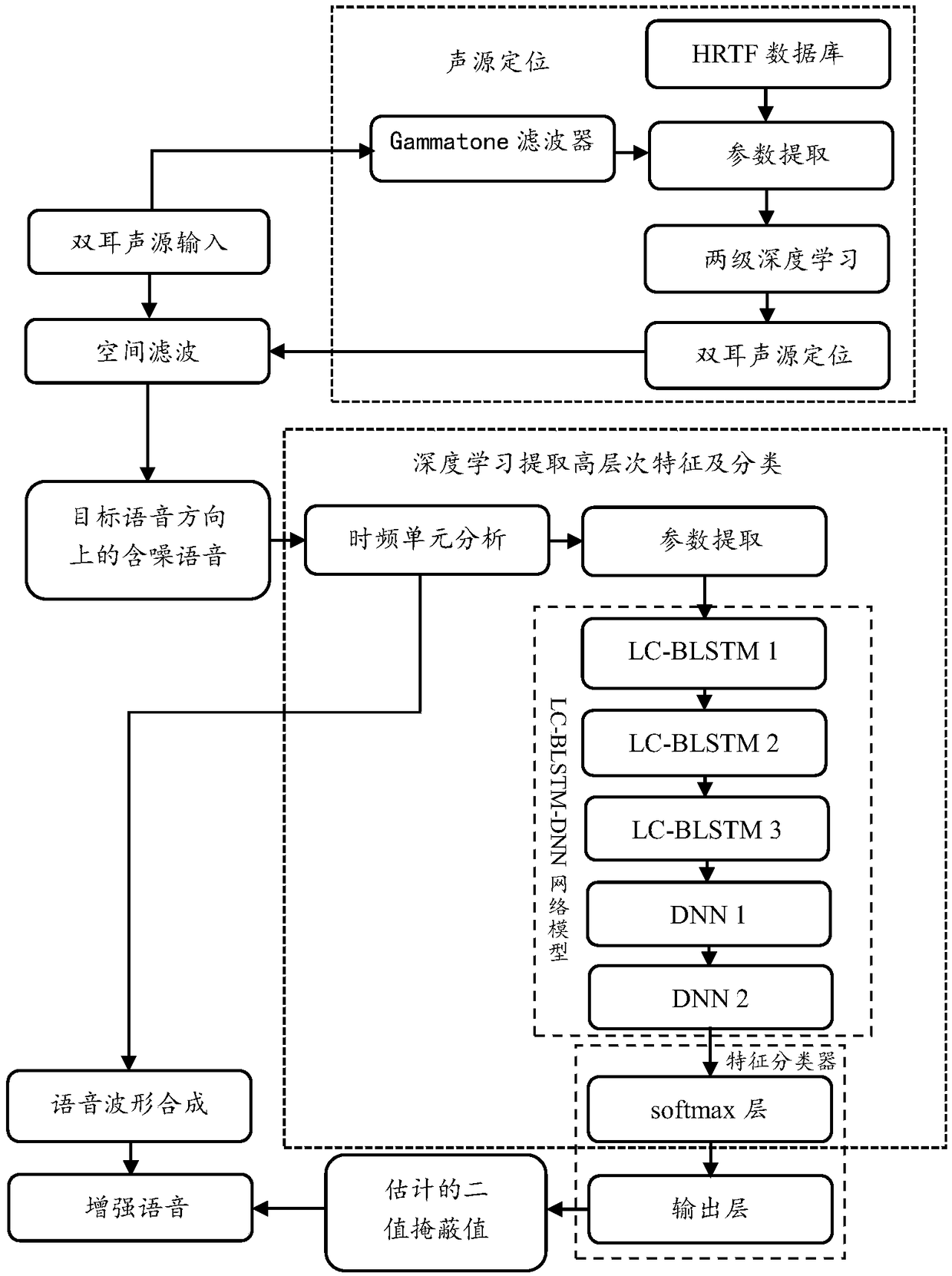Voice enhancement method based on double-ear sound source positioning and deep learning in double-ear hearing aid
A technology of deep learning and sound source localization, applied in speech analysis, instruments, etc., can solve the problems of high complexity, inability to improve the speech intelligibility and comfort of deaf people, and not satisfying the real-time performance of digital hearing aids, and achieve real-time Good performance and low power consumption
- Summary
- Abstract
- Description
- Claims
- Application Information
AI Technical Summary
Problems solved by technology
Method used
Image
Examples
Embodiment Construction
[0026] In step 1, time-frequency analysis is performed on the input signal of the digital hearing aid using a Gammatone filter that can simulate the working mechanism of the basilar membrane and the auditory nerve in the human auditory system.
[0027] (1) Input signal x of digital hearing aid l (k), x r (k), after Gammatone filter
[0028] Divide the signal frequency band into 64 frequency bands to get the decomposed signal x f,l (k), x f,r (k). where m is the filter order, is the initial phase of the filter, U(t) is the unit step function, and B is the bandwidth. f is the index range of the frequency band from 1 to 64, f c is the center frequency of the filter, ranging from 50Hz to 8kHz, l and r are the left and right ear marks, and k is the number of samples.
[0029] (2) The decomposed signal x obtained by using the Hamming window pair f,l (k), x f,r (k) Perform frame-by-frame windowing. According to the short-term stationary characteristics of the speech signal,...
PUM
 Login to View More
Login to View More Abstract
Description
Claims
Application Information
 Login to View More
Login to View More - R&D
- Intellectual Property
- Life Sciences
- Materials
- Tech Scout
- Unparalleled Data Quality
- Higher Quality Content
- 60% Fewer Hallucinations
Browse by: Latest US Patents, China's latest patents, Technical Efficacy Thesaurus, Application Domain, Technology Topic, Popular Technical Reports.
© 2025 PatSnap. All rights reserved.Legal|Privacy policy|Modern Slavery Act Transparency Statement|Sitemap|About US| Contact US: help@patsnap.com



